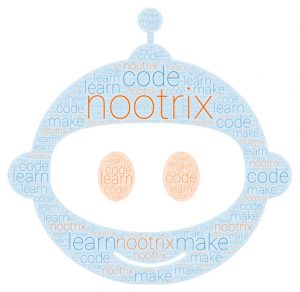Latest Posts
A Robotic Elevator using Lego & Arduino – Part1
- Part 1 (current): Mechanical Design Basics.
- Part 2: Balancing the Elevator.
- Part 3: Electronics (optocoupler, H-Bridge, and more)
- Part 4: Software to control the Arduino
Sensor Scanner for Android: List and Watch your Smartphone Sensors
It is no scoop that Smartphones are attractive for robotics. They gather in a small case a display, wireless for communication, computing capabilities, and a bunch of sensors. That’s cool! But, you might be using a secondhand device, and you don't know what sensors are available, or you may want to check if any is broken. Besides, some sensors are software-based, and thus may be there or not depending on the Android version you are running. This is why we ...
ROS Naming and Namespaces
In this tutorial, we will be talking about ROS namespaces which allow to combine nodes in ways unplanned by developers. This is actually what all ROS is about: allow building systems by connecting nodes, often developed by third parties according to your needs. This is possible thanks to a flexible node naming system. As usual, we will illustrate presented concepts with concrete examples that you can run on your own machine. As a prerequisite, you only need to be familiar ...
A Robotic Dock for Your Smartphone
The idea of using a robotic dock for iPhone and iPod is not new. Back in 2009, a robot hobbyist has developed a humanoid robot named Robochan which head was an iPhone 3GS (see Video 1). The iPhone acted as a screen that displays different facial expressions. It also plays the role of the robot controller and provided some fun features such as a robotic alarm clock. The robot then can wake the user up Video 1: Robochan humanoid robot ...
Ready to Use Virtualized ROS Groovy
UPDATE: You might want to use a more recent version of ROS: Hydro Medusa (released on September 2013). See the corresponding post: Virtual Machine with ROS Hydro Medusa Pre-Installed. Install procedure unchanged. ROS Groovy was released on December the 31st, 2012. For those of you who just want to quickly experiment with it, we provide a ready to use virtual machine. It features ROS Groovy Galapagos installed on Ubunutu 12.04.1 LTS (Precise). The ROS Groovy virtual machine comes in a ...
Your First ROS based System
Many newcomers to ROS don’t know where to start. Indeed, ROS is not an application, but it is rather a robotics middleware. That is an infrastructure to run robotic software. It provides plenty of tools, libraries and packages to ease developing, managing and reusing code. In this post, we’ll go quickly through the main concepts and illustrate them using a simple example. If you want to experiment by yourself, all you need is the Fuerte version of ROS. You can ...
Smart Robots: Shape Matters
When designing a robot, choosing the right shape can have tremendous impact on the robot controller. This idea has been pushed to the extreme with the HexBug Nano. It has no sensors and even no controller at all! Still its behavior is really realistic and robust as shown in Video 1. Video 1: HexBug Nano Robust Behavior The Nano has only one motor that makes it vibrate and as a result move forward. This kind of locomotion is also used ...
Ten Top Roboticists at Collège de France, Paris
As we announced in a former post, the Collège de France hosted in Paris a two days seminar with 10 among the world's most prominent roboticists. For those who couldn't make it, the videos are available online. We provide below the links as well as a short summary of each talk. Pr. Jean-Paul Laumond: Welcome Address In this introduction, Pr. Laumond reminds the history of 50 years of robotics and discusses the question whether robotics is a science or a ...
Virtualizing ROS
UPDATE: ROS Fuerte was released on April 2012. You might want use a more recent version of ROS:
- ROS Hydro Medusa (released on September 2013): Virtual Machine with ROS Hydro Medusa Pre-Installed. Install procedure unchanged.
- ROS Groovy Galapagos (released on December 2012): Ready to Use Virtualized ROS Groovy. Install procedure unchanged.
ROS Networking
Today, we describe how to use ROS Fuerte over the network and have a couple of ROS nodes running on different machines. We assume that you had successfully installed ROS and that you tested it on a single PC by running some tutorials. We also assume that you are running ROS on a PC with Ubuntu which is the reference platform for ROS. Ready? Then, let’s go! Mapping IP Addresses to Hostnames We work with two laptops named r2d2 and ...

